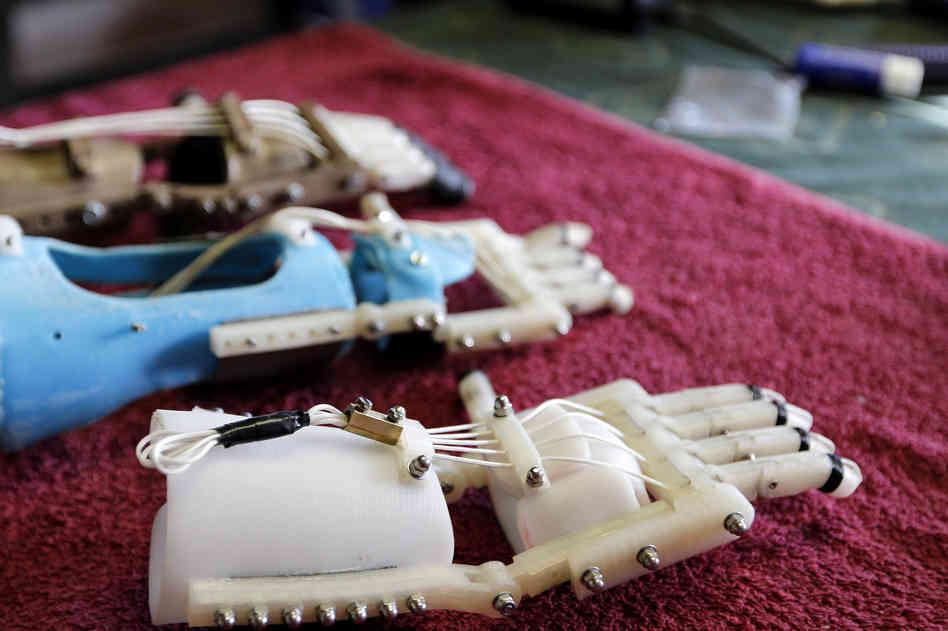
One market that’s set to pop 28% this year, according to an industry expert…
“The tipping point is that magic moment when an idea, trend or social behavior crosses a threshold, tips and spreads like wildfire.”
— Malcom Gladwell, The Tipping Point
3-D Printing: Richard’s $2 Billion Dollar (Severed) Hand
Hype or harbinger of new-Western prosperity?
Profit windfall or investor sinkhole?
New-age appliance or subniche cult item?
We leave it for you to decide… but one thing’s certain: Now that the mainstream press has begun asking these questions about 3-D printing, we’ve reached a tipping point. Search “3-D printing” in Google News and you’ll get 30,800 stories from the past month alone.
In this publication, we’ve called it “The New Industrial Revolution,” “The Fourth Technological Revolution” or simply the “Click. Print. Revolution.” Take your pick.
The most recent story before us: the 3-D-printed “Robohand.”
Richard Van As, a South African carpenter, lost four of his fingers to a circular saw, reports The Associated Press. An artificial limb — one that could detect the muscles’ electrical impulses and move — would have cost him tens of thousands of dollars. Sadly, he was unable to afford that.
“After my accident, I was in pain, but wouldn’t take painkillers,” he told AP.
“I barely slept, and the more pain I had the more ideas I got. Sometimes you have to chop fingers off to start thinking.” Soon after, Van As teamed with an Ivan Owen from Seattle.
 10,000 miles separated Van As in Johannesburg from Owen. But with the help of two 3-D printers donated by MakerBot, the two created their own “Robohand” prosthetic. They were able to cut the prototyping time from a week to just 20 minutes. And the cost? Just $500… more than a 95% discount.
10,000 miles separated Van As in Johannesburg from Owen. But with the help of two 3-D printers donated by MakerBot, the two created their own “Robohand” prosthetic. They were able to cut the prototyping time from a week to just 20 minutes. And the cost? Just $500… more than a 95% discount.
“Maybe Robohand took the 3-D printing world by surprise with what we’ve done,” says Van As in a MakerBot YouTube video, “but if you have a look at the broad spectrum of it, I think that printing a mechanical device that can aid you when you’ve lost fingers, is a tiny little part of it. It’s a big, big picture, this 3-D printing…”
It’s not just Van As who sees potential in this space. “The idea that [3-D printing] is a gimmick, suitable only for hobbyists, looks ever less likely,” reads the latest Economist.
“Cheap 3-D printers for consumers are selling fast, but account for just 5% of the market. Many printers are still used for models and prototypes, but in 2012, more than 25% of the items emerging from 3-D printers were finished parts, up from 4% in 2003, according to Wohlers Associates, a consultancy.”
Wohler predicts that the 3-D printing industry will grow by 28% this year. But he doesn’t buy into the “Click. Print. Revolution” idea.
The company’s eponymous president says, “It’s unsettling to read this oversimplification where you push a button and out pops a shiny new thing,” he posted on his company’s site.
Despite many designs being accessible and simple to print (the websiteThingiverse.com comes to mind), Terry Wohlers argues that the process requires intensive design. We respect his authority on the topic. After all, Wholers’ 297-page industry market report is the go-to publication on additive manufacturing.
“The part you print won’t be as good as the part you order,” Nick Allen adds in an interview with USA Today. Mr. Allen, believe it or not, is both a 3-D printing skeptic and the CEO of a 3-D printing company, 3D Print UK. He thinks that expectations of 3-D printing have been set too high.
“We now live in a world where we can get something to our door by 9 a.m. if we order it at 5 p.m.,” he says. “Printing takes time.”
Au contraire, parries our good friend Josh Grasmick.
3-D Printing for Mature Audiences Only
“Today, I’ll show you the financial perfect storm brewing in the tech sector,” he writes below. “You are in for a hell of a ride.”
In today’s episode of The Daily Reckoning, Josh outlines three forces that will intersect in the next 12 months. He believes they’re set to create a windfall for early investors in the 3-D printing space. “This is it,” he writes: “the calm before the perfect storm.”
….read the entire article HERE













